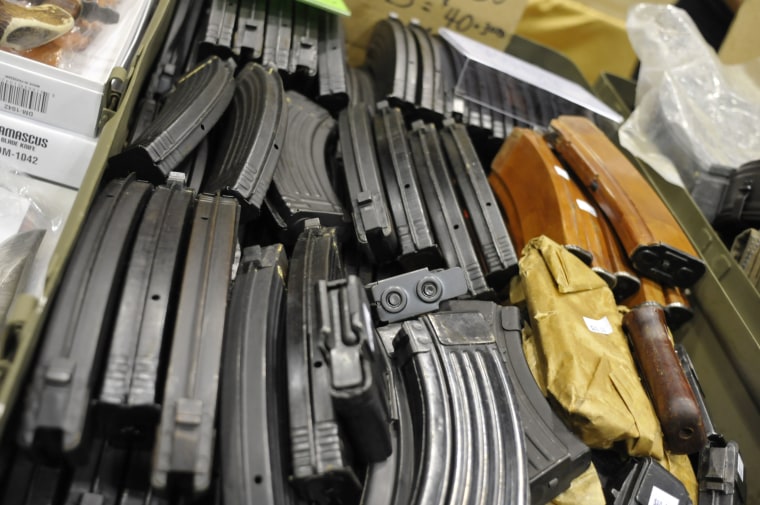I bet you can tell the difference between a horse and a zebra. But can you identify the family, genus, species and subspecies of every animal on the planet?
Like zoo animals, guns are familiar to us all--we see them in movies, many of us own guns. But few of us are experts.
The vast lexicon of gun verbiage is arcane and incredibly technical, and misused most often by the voices most vocal on gun control. Sometimes it's ignorance, but more often it's an effort to scare and confuse the public to advance a political agenda. Either way, if we're going to solve gun crime, we have to get our facts straight. Here's a crash course.
The term "rapid fire" is meant to conjure scary images of fully automatic bullet spray. Think Rambo--squeeze the trigger and 30 rounds spit out. But the weapons used in Aurora, Newtown, and virtually every other mass shooting in recent history were not fully automatic. They were semi-automatic, meaning one trigger pull, one round.
Rapid fire doesn't describe the gun used, it describes the shooter's ability to shoot and reload quickly. So when you say you want to ban "rapid-fire guns," you might be talking about the handgun your mom keeps by her bed or even the shotgun your dad hunts deer with.
There is no such thing as "high-capacity ammunition," as the Washington Post called it, or "high-capacity weapons," as Politico called them. High capacity refers only to magazines, the ammunition-feeding device.
But even when used correctly, the term is arbitrary. There's no single definition for what makes a magazine high-capacity. The 1994 assault weapons ban limited magazines to 10 rounds, because that probably sounded sufficiently scary.
But banning high capacity magazines is like banning big gulps. Shooters can get around magazine restrictions by--you guessed it--buying more magazines.
Assault weapons is the mother of irresponsible, meaningless catch-all terms.
The term is so ambiguous that neither the federal government nor individual states have a single definition. The 1994 ban defined an assault weapon as a rifle or pistol that has a detachable magazine and at least two other largely cosmetic features, like a bayonet mount, flash suppressor, or pistol grip.
Even each of the seven U.S. states that has an assault weapons ban defines them differently.
Gun control activists most likely mean semi-automatic weapons, and again, that's a category that includes the most popular guns used for self-defense, competition shooting and hunting.
This may seem like nitpicking. But when President Obama promises that "no one is talking about taking away your hunting rifle or your self-defense handgun" it matters that gun control activists may in fact be talking about taking away your hunting rifle or your self-defense handgun, whether they know it or not.
So let's forgo the arbitrary, ambiguous, fear-mongering terms and get specific about what we actually mean by gun control. It may be politically effective to rail against "rapid-fire, high-capacity assault weapons" but it doesn't actually mean anything. If we're serious about solving gun crime, we should at least start by getting the terms right.
